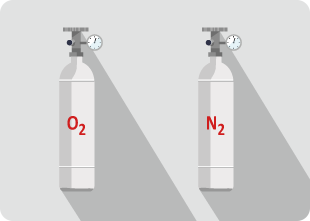
Definition
Pressure equipment is a product or component designed to contain, store or transport gases or liquids under pressure. This category encompasses pressure vessels, steam generators, heat exchangers, piping systems, safety valves, and pressure-retaining assemblies. Even simple pressure vessels integrated into larger machines or installations fall under this classification.
Key Aspects
Pressure equipment is subjected to strict regulations, such as the european pressure equipment directive (2014/68/EU), which sets clear requirements for safety, construction and regular inspections. These regulations establish specific requirements for design, manufacturing and labeling to prevent potential risks such as leaks or explosions.
For placing pressure equipment on the market within the EU, the requirements of the Pressure Equipment Directive 2014/68/EU (PED) apply. The directive differentiates based on pressure, volume, medium, and temperature—resulting in varying requirements for conformity assessment, technical documentation, CE marking, and the involvement of Notified Bodies.
Manufacturers must not only meet safety requirements but also provide complete technical documentation, affix CE marking, and issue an EU Declaration of Conformity. Legal obligations may also arise in the event of modifications, integration into larger systems, or recommissioning within the internal market.
